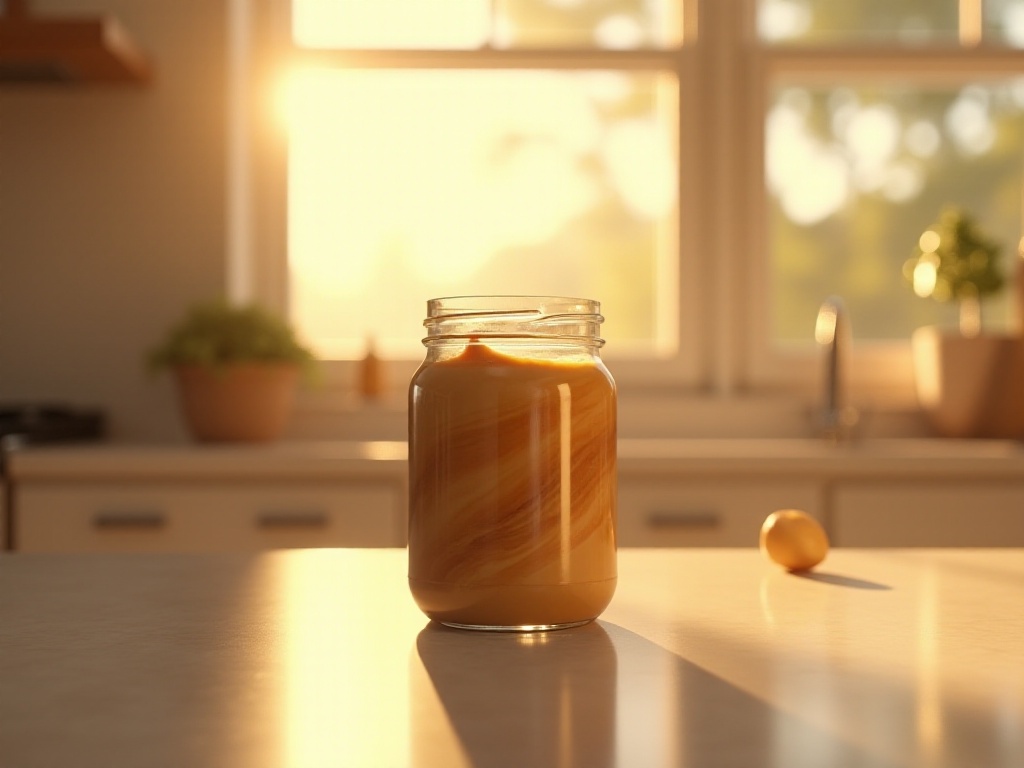In this era of takeout dominance, many people find cooking troublesome and prefer ordering delivery over cooking themselves. However! Cooking your own meals not only saves money but also allows for healthier eating and creates a sense of ceremony! As someone who has evolved from a novice to a kitchen expert through trial and error, I want to share some of my secret techniques today. These tips will definitely transform you from someone who burns eggs into your social circle's culinary expert!
To be honest, when I first started cooking, even cutting vegetables was extremely difficult. Either the cuts were uneven, or my fingers nearly became part of the ingredients. But after years of experience, I've discovered many super practical tips for ingredient preparation.
For example, with peanut butter, many people have encountered the situation where they open the jar to find a layer of oil on top and dry peanut paste below. Don't rush to pour out that oil! That's the essence! Here's a trick: store the peanut butter jar upside down for a day, and the oil will slowly seep to the bottom. Then use chopsticks to slowly stir from the bottom up, and you'll achieve a perfect blend of oil and peanut paste with an super smooth texture!
There's also a particularly time-saving trick for handling herbs. Have you ever been frustrated by those tiny herb leaves? Picking them one by one is so time-consuming! Actually, you just need to run your fingers along the stem from top to bottom against the growth direction, and the leaves will fall off automatically. I use this trick all the time - it's truly a lazy person's blessing!
When cutting onions, many people end up in tears. Here's a pro tip: refrigerate the onion for half an hour before cutting, or place a bowl of cold water nearby while cutting. This greatly reduces the evaporation of irritants, so you won't have to cut while wiping tears anymore.
When processing ginger, using the back of a spoon to scrape is much more convenient than using a knife. Not only is it cleaner, but it also prevents waste. Plus, ginger processed this way is especially fine, making it taste better when stir-frying.

I know many people feel that while their dishes taste good, they don't look refined enough to compare with restaurant dishes. Actually, plating has its techniques, and once you master these tips, you can easily create visually appealing dishes!
First, let's talk about the basics - choosing the right plate! White plates are the most versatile and make food colors appear more vibrant. The size of the plate is also important; too large makes portions look small, while too small looks crowded. Generally, food should occupy 60%-70% of the plate's surface area.
When arranging food, pay attention to layering. For example, with a simple pasta dish, first arrange the noodles in a beautiful circle, then place some golden-fried shrimp on top, and finally sprinkle some fresh basil leaves - this instantly makes the entire dish look much more sophisticated.
The rose arrangement technique with Chinese sausage can immediately elevate your dish. Here's how: first slice the sausage thinly, then fold each slice into a half-circle. Overlap these half-circles like stacking cards. Finally, gently roll them up to create an elegant rose. This technique works not just with Chinese sausage but also with ham slices and salmon slices.
The way you cut vegetables can also make dishes look more refined. For instance, you can use a peeler to slice carrots into thin strips and roll them into beautiful curls. You can create patterns on cucumber surfaces using a fork, which will create pretty decorative edges when sliced. These small details can make your dishes look more professional.

When it comes to ingredient storage, it's truly a science! Proper storage not only saves money but also maintains ingredient freshness. Let me share some practical tips I've gathered.
First, refrigerator organization. Many people have experienced the embarrassment of freezer bags spilling everywhere. Here's a particularly useful tip: before adding ingredients, place the freezer bag vertically in a storage container and fold the top outward. This not only prevents ingredient spillage but also keeps freezer bags upright, greatly saving refrigerator space.
Vegetable storage also has many considerations. Lettuce and greens tend to wilt; you can wrap their roots in plastic wrap and place them like flowers in a container with a little water - they'll stay fresh for several days. Herbs can also be stored this way, plus they'll fill your kitchen with a fresh fragrance.
Fruit storage has its tricks too. For example, many people have experienced bananas turning completely black just days after purchase. Actually, just wrapping the stems in plastic wrap can significantly extend their shelf life. Apples and pears should be stored separately because apples release ethylene, which accelerates the ripening of other fruits.
Condiment storage is also important. Soy sauce, vinegar, and similar condiments should be stored in a cool, dry place away from direct sunlight. Spices should be kept in sealed glass jars, which not only maintains their aroma but also prevents moisture absorption.

A good chef must not only know how to cook but also how to care for their "weapons." The cleaning and maintenance of kitchen tools directly affects the taste and efficiency of cooking.
Oven cleaning is many people's nightmare, especially those stubborn grease stains that won't wipe off. I've discovered a particularly effective method: make a paste with baking soda and white vinegar, apply it to the oven door and interior walls. After 15 minutes, the grease will soften and can be easily wiped clean with a damp cloth.
Cast iron pan maintenance is also important. New cast iron pans need to be seasoned first - heat the pan and brush it with oil repeatedly to form a protective layer. After use, clean it promptly, dry it thoroughly, and brush on a thin layer of oil to prevent rust. The more you use it this way, the better it performs.
Cutting boards are among the most bacteria-prone kitchen tools. It's recommended to wipe them with salt water after each use and stand them up to dry. If the cutting board has an odor, you can wipe it with lemon slices for both deodorizing and disinfecting.
Knife care shouldn't be neglected either. Wipe them dry immediately after use to prevent rust. Regular sharpening with a whetstone will make cutting easier. When not in use, it's best to store them on a knife rack for both safety and blade protection.

During cooking, you'll inevitably encounter some special cleaning issues. For instance, if you accidentally get paint on your clothes, don't panic - I have a particularly effective method: mix white vinegar with warm water, soak the clothes in this solution. After ten minutes, gently scrub with a soft brush, and the paint will come off easily.
Can't get rid of the garlic smell from your cutting board? Try wiping it with lemon slices - the natural acidity of lemons not only removes odors but also disinfects.
The oil filter in range hoods is particularly troublesome to clean. I suggest soaking it in hot water with some dish soap and baking soda for half an hour before cleaning - the grease will come off easily.

Through years of kitchen experience, I've deeply realized that cooking isn't really difficult - the key is mastering the right methods. Like learning any skill, culinary expertise requires constant practice and reflection.
From initial clumsiness to now being able to effortlessly control the kitchen, this process has taught me that with patience and some practical tips, anyone can become a culinary expert in their daily life.
I hope these experiences I've shared will help you avoid some detours in the kitchen. Remember, failure is the mother of success - don't give up because of one failure. Every excellent chef started with crooked carrots and burnt eggs.
Let's continue exploring in the kitchen together and discover more joy. I look forward to seeing more people fall in love with cooking and create their own delicious dishes. After all, the happiest moments are seeing the smiles on family and friends' faces as they enjoy the food you've prepared with your own hands.
 Previous
Previous
